|
Two recent articles in Australia spell out the consequences for project managers and senior managers in the event of a person being injured or killed on a project.
Charges laid over Griffith construction worker death Kenoss Contractors, senior manager charged over death But let's put aside the direct consequences to the project manager, and consider some of the other consequences of an accident on a construction project. What about the workers themselves? What about their families? Workers have an expectation, and a right, that they will return home from the project in the same health as they started. Families expect to see their loved ones (and bread winners) return from work at the end of the day. The project manager has a duty of care to ensure this happens. I have found many construction project managers think safety is not part of their responsibility, however, this is incorrect - it's the responsibility of everyone working on the construction project. Safety cannot be left entirely to the safety advisor, nor can it be driven only by the project manager. Safety is a team effort that needs support from the whole management team and all the workers. To achieve this, the project manager must lead the team - and lead by example. #constructionsafety
0 Comments
"Who doesn't claim all the money due to them? Who waits to claim money owing? Well some contractors don't claim all the money owing, or submit their valuation claims late." Many construction projects fail to submit their monthly valuations or progress claims on time or fail to claim all the revenue they are entitled to. This usually results in the contractor having a negative cash flow which impacts the company's operations. Imagine not claiming all the money due to you or your company? Seems hard to believe! But it happens more often than you think. #constructionfinance #contractors #constructionmanagement Maximising construction valuationsWhere possible construction projects should maximise the revenue claimed in the monthly valuations by: 1. making sure that all work is claimed 2. over-claiming work ahead of time where possible 3. ensuring milestones are met so that they can be incorporated in the payment 4. making the valuation date as late in the month as possible 5. ensuring that variations and claims are submitted and approved quickly so that they can be claimed 6. claiming for unfixed materials where applicable 7. claiming as much of the indirect costs or preliminaries as possible "Money in your bank account is better than in your client's" Remember, it’s better for the contractor to have the money sitting in their bank account than in the client’s. However, when compiling cost reports, ensure the over-claims in the valuation are excluded from the revenue used in the report.
Paul Netscher has written several easy to read books for owners, contractors, construction managers, construction supervisors and foremen. They cover all aspects of construction management and are filled with tips and insights.
Visit to read more. The books are available in paper and ebook from most online stores including Amazon. © 2022 This article is not to be reproduced for commercial purposes without written permission from the author. For the last few years drones have been used by the military to drop bombs and carry out surveillance missions. The pilots are usually based thousands of kilometres from the war zone – returning home to their families at the end of their missions.
But now drones are playing a bigger part in everyday life. From conducting anti-poaching and anti-smuggling operations, monitoring and tracking criminals and traffic control. Paparazzi have now found this the ultimate tool for ‘gate crashing’ celebrity events and taking photographs. In construction drones have also been used to take pictures of projects. But what of the future? Well check out this website: http://blogs.smithsonianmag.com/design/2013/02/the-drones-of-the-future-may-build-skyscrapers/ This might seem a bit far-fetched at this stage. But think of this - if a drone can carry a few hundred kilograms of bombs, why couldn’t it be used to lift structures weighing several hundred kilograms on project sites. Some construction projects already make use of helicopters to erect structures in remote and rugged countryside, or on top of buildings. Why not use drones instead? Check out this website where experiments have been conducted with drones to evacuate wounded soldiers from the battlefield. http://www.bbc.co.uk/programmes/p0208hgn But does it have to be restricted to lifting heavy objects? Maybe drones could be used for other tasks like painting elevated structures. Think of the maintenance work on bridges like the Golden Gate Bridge and the Sydney Harbour Bridge. Could drones do some of this work? Drones can certainly assist with surveillance work on projects – getting to places like roofs to check for potential problems. But maybe there is more to this. Instead of the design engineer travelling from his office to perform quality checks he may just be able to fly his drone around the project – honing the camera in to ensure the construction is meeting the quality standards and specifications. Next time there is an interface or design problem on site, instead of waiting for the engineer to visit the project, the engineer can view the problem operating a remote camera from his desk, while at the same time modifying his drawing in real time to solve the problem. Maybe projects in the future will have to employ air-traffic controllers? Many construction projects require a large staff compliment and a big workforce. The contractor's project manager or site manager cannot do this alone. To be successful it's important to:
Paul Netscher has written several easy to read books for owners, contractors, construction managers, construction supervisors and foremen. They cover all aspects of construction management and are filled with tips and insights.
Visit to read more. The books are available in paper and ebook from most online stores including Amazon. © 2022 This article is not to be reproduced for commercial purposes without written permission from the author. This quote from Robin Williams typifies what we as Project Managers should experience.
“There is still a lot to learn, and there is always great stuff out there. Even mistakes can be wonderful.” See more quotes from the comic genius Robin Williams who tragically died this week.It’s good practice to arrange ‘a lessons learned’ workshop at the end of every project. I’ve seen many mistakes made, and then the company, and even the same team on occasion, go and make the same mistakes on their next project. The most important part of making a mistake is being able to fix it. The second most important part is to learn from the mistake and avoid making it again. We should always pass our knowledge on to other people within the company so they can also learn from our mistakes. Of course, it’s not only about learning from mistakes. When we manage projects successfully it’s just as important to pass the lessons of these successes on to other people. "Problems often occur on construction projects. Can you resolve every problem on your own?" Construction projects often experience problems and it’s expected the Project Manager should solve them. Sometimes however the Construction Project Manager doesn’t have the necessary experience or knowledge to solve them, they don’t have the back-up from their company, or the problem is simply too big and difficult to resolve. Project Managers either: ignore the problem hoping it will go away try and hide the problem from their Head Office try and solve the problem, often in the wrong way, making it worse #constructionprojectmanager #constructionmanagement #constructionprojects What to do if there is a problem on your construction projectIt’s important when a potential problem is detected which could jeopardise the completion of the construction project or affect its profitability, that the Project Manager: notifies their manager asks for help if necessary makes contingency in the construction project’s cost report for the problem’s potential impact Senior management usually don’t like dealing with problems, but they dislike surprises and failed construction projects even more. If you are on linkedin check out this great article Why asking for help makes you a stronger leader Other useful articles: Your Construction Project is in Trouble – Who are you Going to Blame? Covering Up Construction Mistakes Can Cost You More Than You Think If your Construction Project Goes Wrong, Make Sure you Do These 11 Things "It is a very easy to use book with guidelines that are referenced intelligently with case studies." Reader review Amazon Paul Netscher has written several easy to read books for owners, contractors, construction managers, construction supervisors and foremen. They cover all aspects of construction management and are filled with tips and insights.
Visit to read more. The books are available in paper and ebook from most online stores including Amazon. © 2022 This article is not to be reproduced for commercial purposes without written permission from the author. "What's happening on the construction project while management are in meetings?" Some construction projects have too many meetings, and I have known some have an hour long Supervisors meeting every day. What were the workers doing while their Supervisors were off site? How many problems on site remained unresolved? How productive was the project? How many risks were taken in this time, which could have resulted in an accident? #constructionmanagement #contractors #constructionprojectmanager Rules for construction project meetingsIts good practice for the Construction Project Manager to hold meetings with their staff, however these should: 1. only involve the relevant project staff (those not invited should be informed why their attendance isn’t required so they aren’t offended) 2. have an agenda 3. keep the discussion to items affecting the majority of attendees (if a specific task or matter, has to be discussed with only one individual, meet with them separately, and if an individual brings up a topic not relevant to other staff, ask the person to discuss the item outside the meeting) 4. be brief, to the point and restricted to 30 -40 minutes long 5. be set at an appropriate time that will cause the least disruption in the day’s construction activities for the attendees (for instance Supervisors should not be called to a meeting at the start of the working day when they are at their busiest organising their teams, it may be more convenient, to schedule their meetings 30 minutes before their lunch or tea break) 6. ensure staff have followed through on actions raised at the previous meeting When construction meetings can be usefulConstruction project staff meetings are useful to: 1. advise personnel of progress and the milestones that must be achieved (Will your construction project be completed on schedule? Read this) 2. update staff of new influxes of personnel, equipment or subcontractors (The Right Way To Introduce New Workers to your Construction Project) 3. discuss concerns relating to safety, quality or industrial relations 4. provide feedback to project staff regarding problems or issues that affect most of them 5. update staff on changes on the construction project or within the company 6. give positive feedback providing feedback to the construction project team "Great book, offers excellent insight" Reader review on Amazon Paul Netscher has written several easy to read books for owners, contractors, construction managers, construction supervisors and foremen. They cover all aspects of construction management and are filled with tips and insights.
Visit to read more. The books are available in paper and ebook from most online stores including Amazon. © 2022 This article is not to be reproduced for commercial purposes without written permission from the author. "Construction projects and contractors must have systems in place to prevent theft and fraud" In this day and age of theft and fraud it’s important to have sufficient checks and controls in the operating systems to pick up and, more importantly, to deter fraud in construction. These checks should include ensuring that: 1. the item has been received and complies with the quality requirements and the specifications (When construction equipment arrives on your project check these things.) 2. the work has been carried out in accordance with the order including supplying all quality documentation, spares, and warranties and completing all commissioning 3. the value invoiced does not exceed the value on the order 4. deductions have been taken into account 5. the agreed discounts have been taken 6. retention is withheld where applicable 7. the correct amount of tax is added 8. the invoice hasn’t been previously paid 9. there aren’t any arithmetic errors To facilitate some of the above it may be necessary for the appropriate people, who have the required knowledge, to check and confirm the item has been received and complies with the requirements of the order. #constructionfraud #constructionfinance #constructionmanagement "Good documentation is essential" It’s also essential that the payment process is clear, so that it’s possible to follow what the payment is for, and what deductions have been made and why they were made. If it’s not clear it’s possible that when future payments are made the supplier receives more money than is due, or deductions are accidently reversed. To enable this checking process it’s important to tie-up the order, invoice, delivery, batch and payment numbers. Equally important is to ensure documents are filed and stored in the correct place and sequence and are readily available for several years should disputes arise with suppliers later. Other useful articles Fraud and theft in construction Is your construction project losing money? Do you want to find out why? Paul Netscher has written several easy to read books for owners, contractors, construction managers, construction supervisors and foremen. They cover all aspects of construction management and are filled with tips and insights.
Visit to read more. The books are available in paper and ebook from most online stores including Amazon. © 2022 This article is not to be reproduced for commercial purposes without written permission from the author. "It’s important the schedule is optimised to be as short as possible without compromising the quality and safety, while using resources efficiently" Construction Project Managers must understand the relationship between time and cost. It would seem obvious that the shorter the construction project duration the lower its cost. This, however, isn’t always the case. Sometimes a construction project with a short duration results in a congested project site and inefficient utilisation of the construction resources, or excessive peaks and troughs in the resource histograms. It’s therefore important the construction schedule is optimised to be as short as possible without compromising the quality and safety on the project, yet also ensuring the construction resources are utilised efficiently. #constructionschedule #constructionmanagement #constructionprojectmanagement Other Useful Articles: 10 reasons why a construction schedule/program is useful Mistakes that impact construction schedules/programmes Will your construction project be completed on schedule? Read this "The book is really great. Its perfectly refills majority of PM theoretical books with practical experience of real professional." Reader on Amazon Paul Netscher has written several easy to read books for owners, contractors, construction managers, construction supervisors and foremen. They cover all aspects of construction management and are filled with tips and insights.
Visit to read more. The books are available in paper and ebook from most online stores including Amazon. © 2022 This article is not to be reproduced for commercial purposes without written permission from the author. |
Archives
June 2024
Note: We welcome genuine comments, especially comments that add additional information to the subject matter in the article. We however reserve the right to remove inappropriate comments, which includes comments that have nothing to do with the subject, comments that include inappropriate language, and comments that are an advertisement for a product or company, or which include an advertising link. Comments must be in English. We will not enter into discussion on why a particular comment was removed.
CategoriesCopyright 2016 - The attached articles cannot be reproduced for commercial purposes without the consent of the author.
The opinions expressed in the attached articles are those of the writer. It should be noted that projects are varied and different laws and restrictions apply which depend on the location of the contractor and the project. It's important that the reader uses the supplied information taking cognisance of their particular circumstances. The writer assumes no responsibility or liability for any loss of any kind arising from the reader using the information or advice contained herein. "I have what I consider some of the best books on construction management."
Books are available from: Amazon.com Amazon.co.uk takealot.com kalahari.com Amazon.in Amazon.de Amazon.fr Amazon.it Amazon.com.au Powell's Fishpond uread bokus Amazon.ca Amazon.es Other retail stores Available in paperback or on Kindle "28 YEARS OF CONSTRUCTION PROJECT MANAGEMENT EXPERIENCE, DEVELOPING SUCCESSFUL CONSTRUCTION PROJECT MANAGERS AND BUILDING SUCCESSFUL CONSTRUCTION COMPANIES"
|
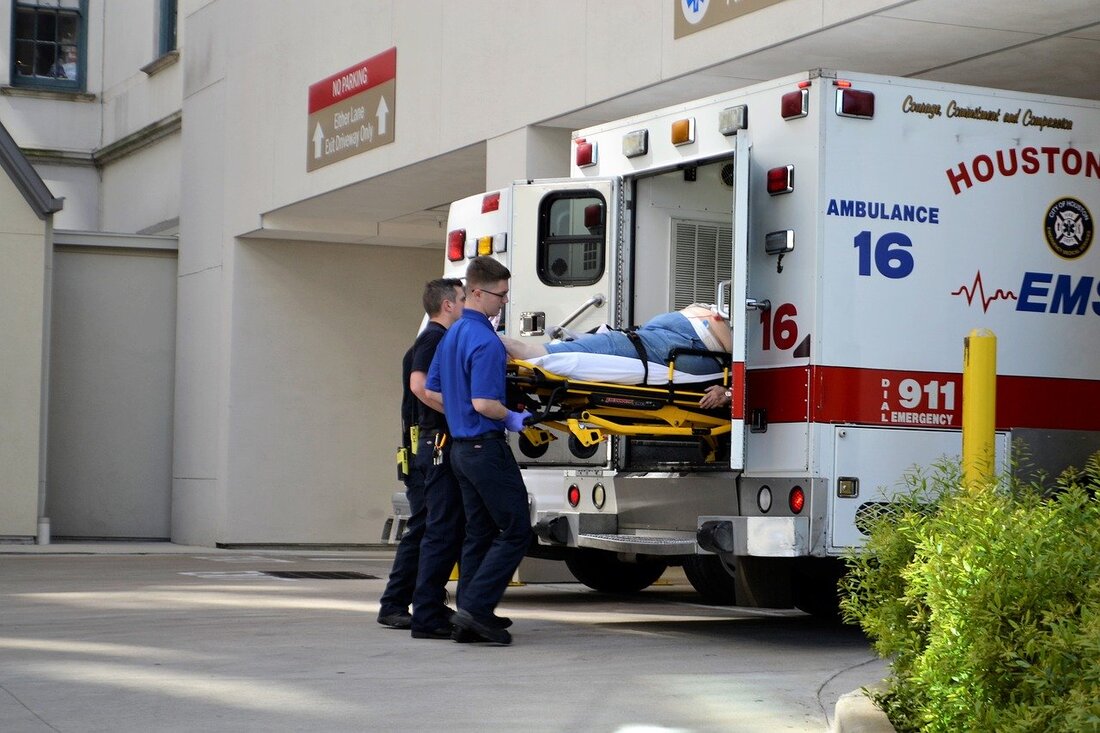



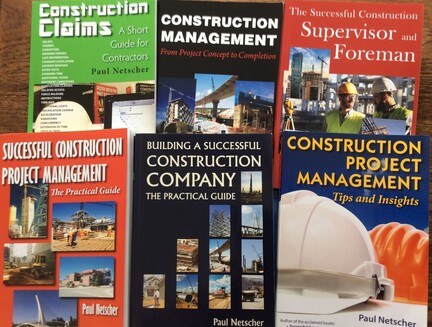



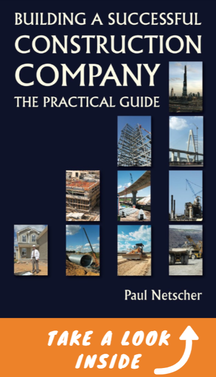
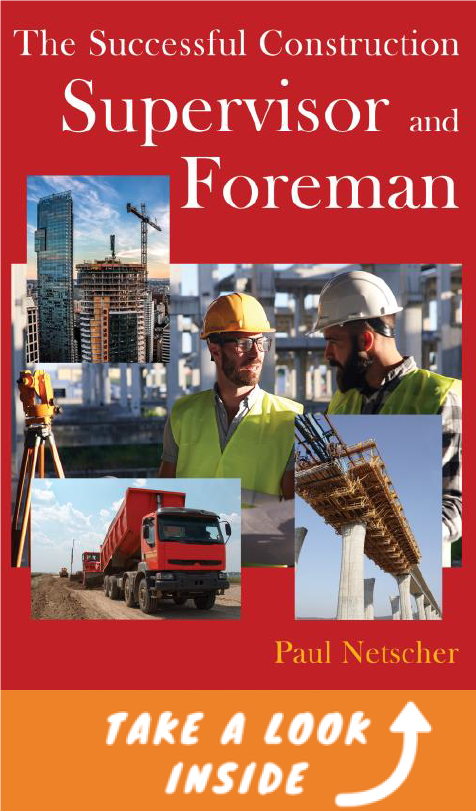



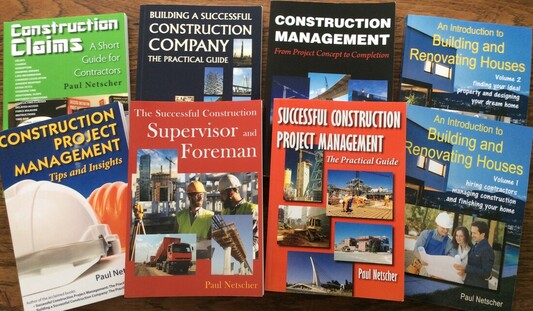
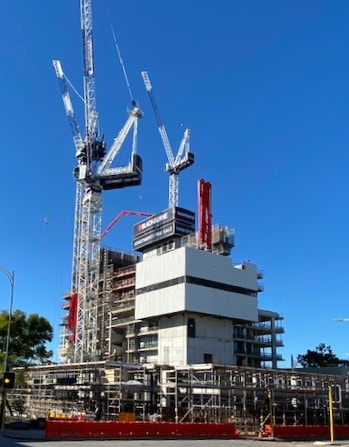



 RSS Feed
RSS Feed




